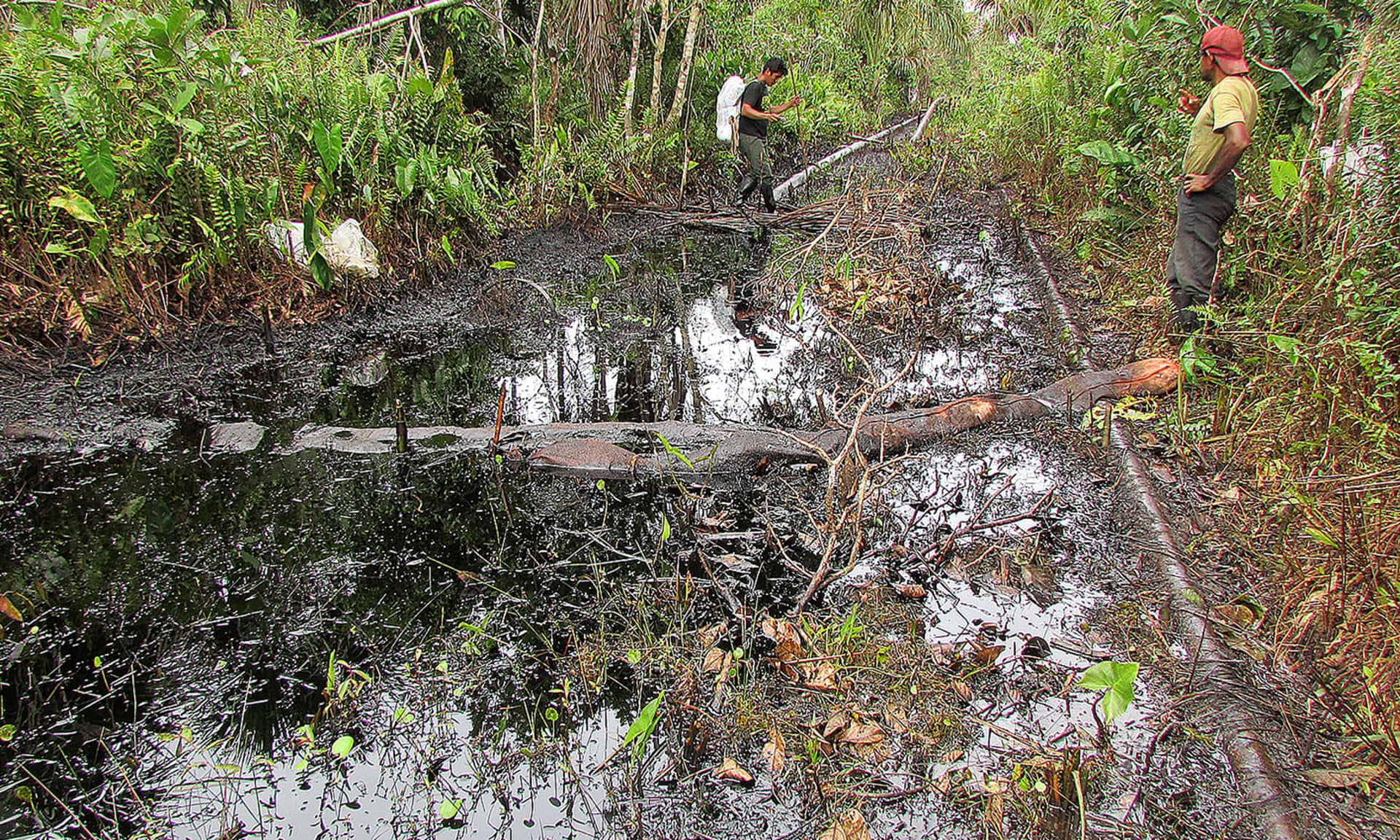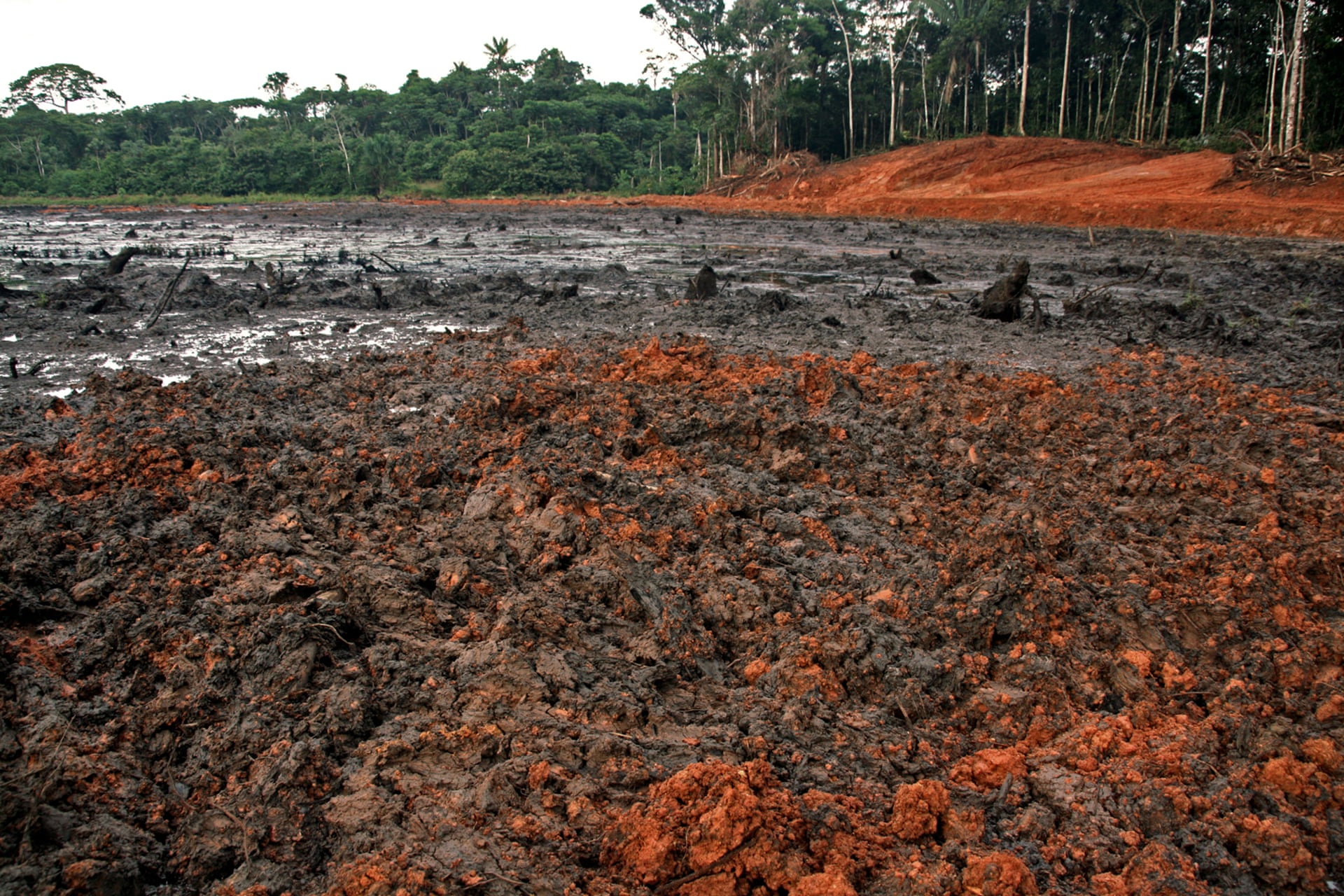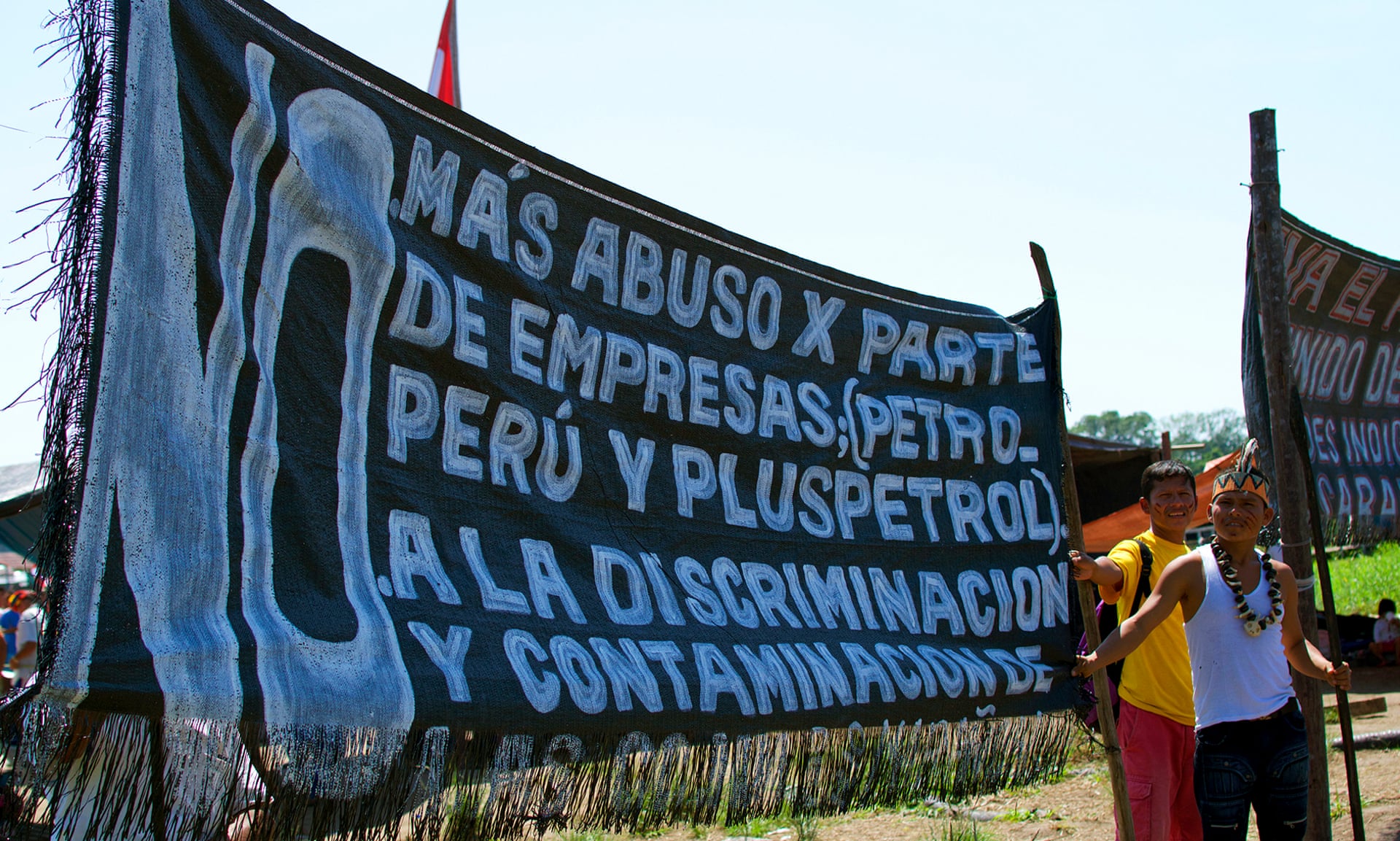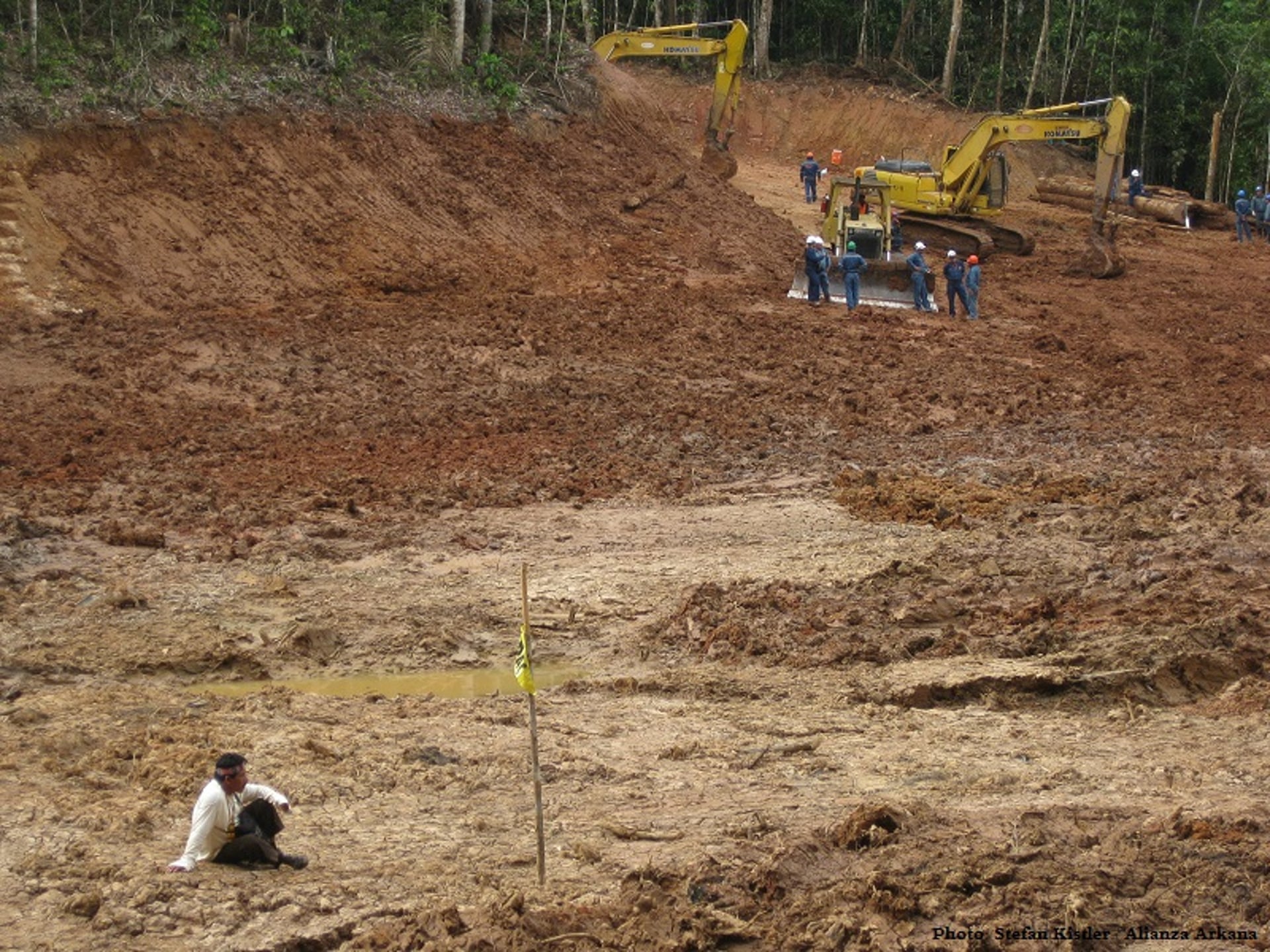
Over four decades of exploration and extraction have caused an environmental and health crisis in indigenous communities
By David Hill
August 8, 2017.- Who is going to clean up Peru’s northern Amazon after decades of companies spilling oil and dumping billions of barrels of toxic production waters? Certainly not US company Occidental which ran the biggest concession, Lot 1-AB, until 2000, nor, it would seem, the state-owned Petroperu, which ran the other major concession, Lot 8, until 1996 and operates the rusty, leaking North Peruvian Pipeline to this day.
Nor Pluspetrol, a company founded in Argentina and now registered in the Netherlands which took over both Lot 1-AB and Lot 8, if its actions to date are anything to go by. Nor the China National Petroleum Corporation, which bought 45% stakes in both concessions in 2003. Nor the subsidiary of a Canadian company now called Frontera Energy which, in 2015, when Lot 1-AB’s name was effectively changed to Lot 192, bought 100% of operations in a two year temporary contract.
The impacts on the Achuar, Kichwa, Kukama, Quechua and Urarina indigenous peoples living in this region have been appalling: contaminated rivers, streams, lakes, lagoons, soils, gardens, game, fish, and all manner of related health problems, including epidemics, miscarriages, skin diseases, diarrhoea and deaths, according to reports. Rights have been trampled over and ignored, requests for land title blocked, protest criminalised, communities divided, forest and spiritual sites destroyed, 1,000s of outsiders brought in as labourers, confidence in government eroded, and economic dependency fostered. Enter alcoholism, prostitution, HIV-AIDS, suicide and often, when members of communities have found employment with the companies, poor working conditions.

“The [indigenous] communities in the [Corrientes, Maranon, Pastaza and Tigre river] basins in Loreto have been damaged by oil operations for the last 45 years,” stated the ACODECOSPAT, FECONACO, FEDIQUEP and OPIKAFPE indigenous federations earlier this year. “Lagoons with oil, contaminated animals, dead fish, knowledge loss, social disorder and the mistreatment of men, women and children, among other things.”
“Water is the source of our life,” Daniel Saboya, Achuar man and president of indigenous federation FEPIAURC, told the Guardian. “There’s no fish anymore in the [River] Corrientes. [People who buy this oil] should know where it comes from.”
Federations and communities have fought for years - for land rights, compensation, jobs, consultation, clean-up, indemnity, dialogue, health studies, healthcare, higher environmental operating standards, and access to installations to monitor the impacts, among other things. Arguably the most significant achievement yet - in terms of wringing commitments out of the government - was the Act of Lima signed in March 2015.
One of the 19 commitments made in that Act was to ensure that Lot 1-AB and Lot 8 are cleaned-up by the operating company, Pluspetrol, and another to establish what is now called the Environmental Remediation Contingency Fund - with roughly US$15 million in it - for “when the state is unable to enforce the obligation on the operating company to clean-up.” PUINAMUDT, a “platform” comprising several indigenous federations, described the Contingency Fund as “unprecedented in the environmental history of Peru, according to expert opinion.”
The government again committed to cleaning-up in December last year following a 117 day protest in an indigenous community, Saramurillo, along the River Marañon - one of 32 commitments in total, another landmark achievement. In addition to agreeing to contract a study of the North Peruvian Pipeline and other infrastructure in both Lot 192 and Lot 8, the Energy Ministry “guaranteed” that “remediation of sites impacted by oil operations will begin in 2017.”
Will that guarantee be met? In June the National Environment Fund (FONAM), which oversees the Contingency Fund, announced the results of a tender to design Rehabilitation Plans for 32 contaminated sites in the Corrientes, Pastaza and Tigre basins. 13 bids were made by five companies or company partnerships - but all 13 were rejected.
The 32 sites, such as Lake Ushpayacu in the Pastaza basin, have been identified as “priorities” - given that it is obvious that US$15 million is nowhere near enough to clean-up all the contamination. FONAM is now planning a second tender and is convening a meeting next week, on 10 August, of the Contingency Fund’s board. Peru’s president Pedro Pablo Kuczynski briefly referred to “contaminated rivers” in his Independence Day speech last week, but made no mention of Loreto or the government’s recent commitments to clean-up.

At the same time, Perupetro, the state entity responsible for contracting oil companies, is talking up extending operations in Lot 192 beyond September, when the contract of Frontera’s subsidiary, Pacific Stratus Energy, expires. In May it told indigenous federations that it was evaluating the capacity of Petroperu to operate the concession, or hold an international tender. Perupetro argues it can “negotiate directly” with Petroperu due to an October 2015 law, which ACODECOSPAT, FECONACO, FEDIQUEP and OPIKAFPE claim Perupetro is using to justify avoiding doing prior consultation with the indigenous peoples living in the region. That same month, Reuters reported Petroperu’s chief executive saying Pacific is interested in being its long-term partner in the concession, although Petroperu was described as “absent from exploration and production for years” and therefore unlikely to have “any operational role.”
In addition, Perupetro functionaries said in May that Pacific will continue in Lot 192 beyond September for a further 18 months anyway, irrespective of any longer-term potential Petroperu collaboration. The reason given was that operations were suspended for a period since it took over the concession and therefore it wouldn’t able to fulfil the terms of its two year temporary contract, according to Sarah Kerremans, from Peruvian non-profit association Chaikuni Institute, which partners with indigenous federation FECONAT.
“The explanation for the suspension of the contract was the non-functioning of the pipelines,” Kerremans told the Guardian. “That’s the “official” reason. Pacific has been working again since February, but only on “emergency” grounds, meaning this doesn’t count within its contractual obligations. Actually, nobody really understands what this means.”
But what about, first, cleaning-up the horrific mess made over the last four decades, as indigenous federations have requested for years, and as the government agreed in both the Act of Lima in 2015 and Saramurillo last year? What about indigenous peoples’ rights to give their consent before any such contract can be signed? Last month two United Nations’ Special Rapporteurs, Victoria Tauli-Corpuz and Baskut Tuncak, urged Peru to suspend new contract negotiations until “all environmental damage has been remedied” and indigenous peoples’ rights to “free, prior and informed consent is guaranteed.”
Earlier this year Peruvian NGO Equidad, supported by ACODECOSPAT, FECONACO, FEDIQUEP and OPIKAFPE, published a book focusing on Pluspetrol’s operations in Lot 1-AB and Lot 8, titled El Daño no se Olvida. Here is a quick run-down of some of the most alarming figures - the majority related to environmental contamination and the health crisis:

3 billion: Estimated barrels of toxic production waters dumped by Pluspetrol in Lot 1-AB between 2000 and 2009 into sources of water used by indigenous communities. This figure is based on roughly 1 million gallons being dumped every day for eight years. Equidad argues that this dumping - done by Occidental too - is the main source of contamination, together with “constant crude oil spills resulting from accidents or erosion of pipelines.”
1 billion: Estimated US dollars to clean-up and pay indemnity for the contamination in Lot 192 and Lot 8, based on a comparison with Ecuador and Nigeria. A similar figure was mooted by US NGO E-Tech International in 2016.
21.9 million: US dollars that Pluspetrol Norte, the Pluspetrol subsidiary operating in northern Peru, was fined for “environmental infractions” between 2007 and 2014, according to Peruvian media site Convoca. This made Pluspetrol Norte easily the most fined company in Peru - more than four times worse than the runner-up - although Equidad states the sum should be much higher.
9.8 million: US dollars needed to clean-up contaminated sites identified by Pluspetrol in its Abandonment Plan for Lot 1-AB, which excluded the majority of the areas identified by the government. Indigenous federations continue to lobby the Energy Ministry to approve the Plan and ensure that Pluspetrol complies with it.
6.1 million: Approximate US dollars that Pluspetrol was fined in 2013 after it “disappeared” Lake Shanshococha, in Quechua territory in the Pastaza basin. Quechua environmental monitors and four congressmen and -women had found Shanshococha contaminated with oil, but some months later other government functionaries visited and discovered it had been drained and no longer existed.

1.1 million: Hectares across which Peru’s government declared environmental and health emergencies in the Corrientes, Marañon and Tigre basins in 2013 and 2014.
479,265: Size of Lot 1-AB in hectares when it was acquired by Pluspetrol in 2000. It is in one of the remotest parts of the Peruvian Amazon, in the Loreto region, along the border with Ecuador.
209,000: Hectares excluded from Lot 1-AB in 2011, enabling Pluspetrol to argue it didn’t have to clean-up the contamination there.
2,014: Contaminated sites identified by Pluspetrol in Lot 1-AB in 2015.
400+: Kilometres of roads and pipelines built in Lot 1-AB and Lot 8.
375: The number of times that the permitted levels of chromium in the soil in a Pluspetrol Complementary Environmental Plan for Lot 1-AB and Lot 8 was higher than the permitted levels in the US.
300+: Oil wells drilled in Lot 1-AB and Lot 8.
180: Estimated oil spills in Lot 1-AB and Lot 8 between 2007 and 2013.
112: Oil spills registered by indigenous community monitors in Lot 1-AB and Lot 8 between 2007 and 2011.
99: Percentage of Achuar men, women and children from the Corrientes basin with cadmium levels in their blood higher than permitted, according to a Health Ministry sample and report in 2005.
92: Contaminated sites recorded by state agency OEFA in 2014 which had not been identified by Pluspetrol in its Complementary Environmental Plan for Lot 1-AB, and which the company did not include in its Abandonment Plan.
90: Percentage of oil spills in 2013 that Pluspetrol blamed on “vandalism.”
86: The number of times that the levels of aluminium in a stream providing the daily water for the biggest town in the Lot 1-AB region was higher than that recommended by the World Health Organisation.
79: Percentage of Achuar adults from the Corrientes basin with levels of lead in their blood higher than permitted, according to a Health Ministry sample and report in 2005.
66: Percentage of Achuar children from the Corrientes basin with levels of lead in the blood higher than permitted levels, according to the Health Ministry sample in 2005.
53: Percentage of indigenous communities in the Corrientes, Marañon, Pastaza and Tigre basins which do not have land title.
47: Percentage of indigenous communities in the four river basins which are requesting that more land is titled to them.
31: Number of Achuar and Urarina communities that blocked Pluspetrol’s operations for 13 days in 2006, leading to the signing of the Act of Dorissa. This included Pluspetrol agreeing to start re-injecting - rather than dumping - its toxic production waters from late 2007 in Lot 1-AB and from July 2008 in Lot 8.
21: Number of Quechuas and Kichwas charged by Pluspetrol for a series of alleged crimes following a protest in the indigenous community of Nuevo Andoas in 2008. All were found innocent by a local court, although many had been imprisoned. Pluspetrol subsequently appealed to the Supreme Court but lost again, with the court ruling that the right to protest, in this case, was enshrined in Peru’s Constitution.
0: Sum paid to indigenous communities by Pluspetrol to use certain areas in Lot 1-AB and Lot 8 which in 2006 the communities did not have title to. Such areas were declared the state’s property and “without any useful purpose”, and effectively blocked communities’ attempts to obtain title in the future.
